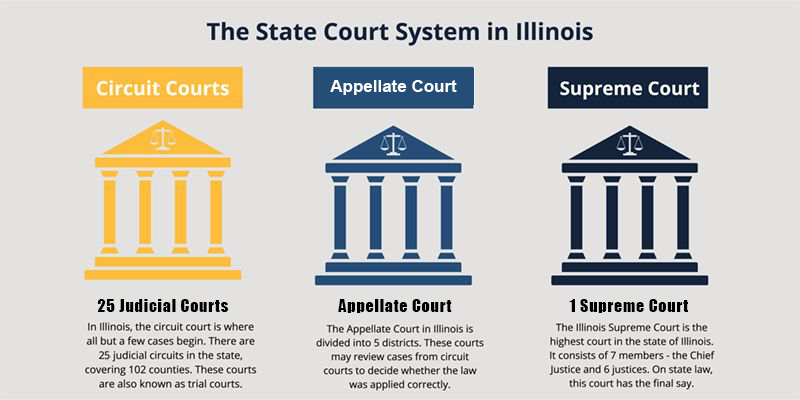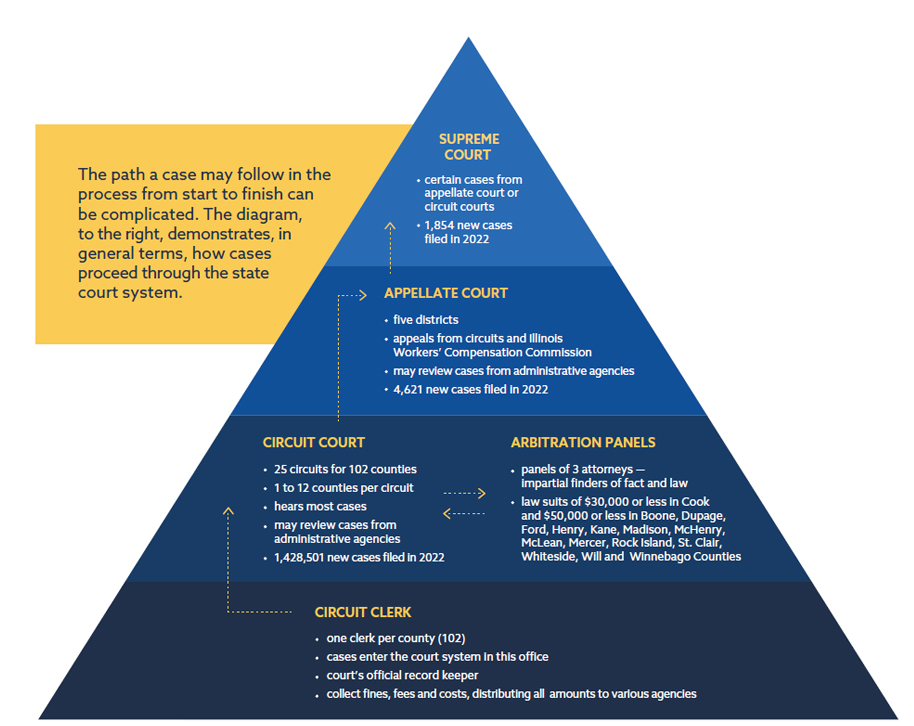How Cases Proceed Through the Courts | State of Illinois Office of the Illinois Courts
How Cases Proceed Through the Court System
Illinois has had a unified court system since 1964. In that year, voters approved an amendment to the 1870 Constitution which made major changes in the system. Prior to 1964, the court system was fragmented. The courts of original jurisdiction had some concurrent and overlapping jurisdiction, and each court operated independently of the others.

The old system had a circuit court with statewide original jurisdiction in all cases and some appellate jurisdiction; a Superior Court of Cook County having concurrent jurisdiction with the Circuit Court of Cook County; the Criminal Court of Cook County also having concurrent jurisdiction with the Circuit Court of Cook County but limited to criminal cases; a county court in each county with special jurisdiction that partially overlapped that of the circuit court; a probate court in certain counties with special jurisdiction; statutory municipal, city, town and village courts, with jurisdiction overlapping that of the circuit court; and justice of the peace and police magistrate courts with limited jurisdiction.
By 1962, Cook County alone had 208 courts: circuit court, superior court, family court, criminal court, probate court, county court, twenty-four city, village, town and municipal courts, seventy-five justice of the peace courts, and 103 police magistrate courts. In addition, there were seven supreme court districts numbered from south to north and four appellate court districts numbered from north to south. For example, the First Supreme Court District was in a part of the Fourth Appellate Court District and the Seventh Supreme Court District was in a part of the First Appellate Court District. In today’s system, as shown below, there are three levels of courts: circuit, appellate, and supreme, all operating within clearly defined geographical boundaries. The circuit court is a court of original jurisdiction which is divided into twenty-four circuits. Each circuit is located in one of five appellate court districts. Cases enter the circuit court via the circuit clerk’s office in a county of the circuit. Cases may be appealed to the appellate court in the district containing the circuit court, or, in certain circumstances, directly to the Supreme Court. After an appellate court decision, parties to the case may seek discretionary review by the Supreme Court. Supreme and appellate district and circuit maps are found in their respective sections of this publication.
 Source: 2023 Annual Report of the Supreme Court of Illinois
Source: 2023 Annual Report of the Supreme Court of Illinois